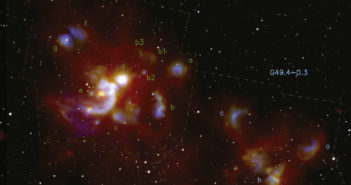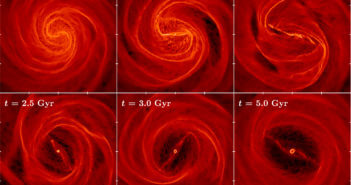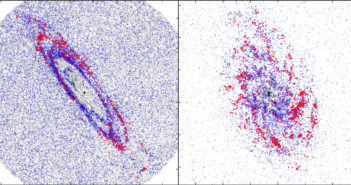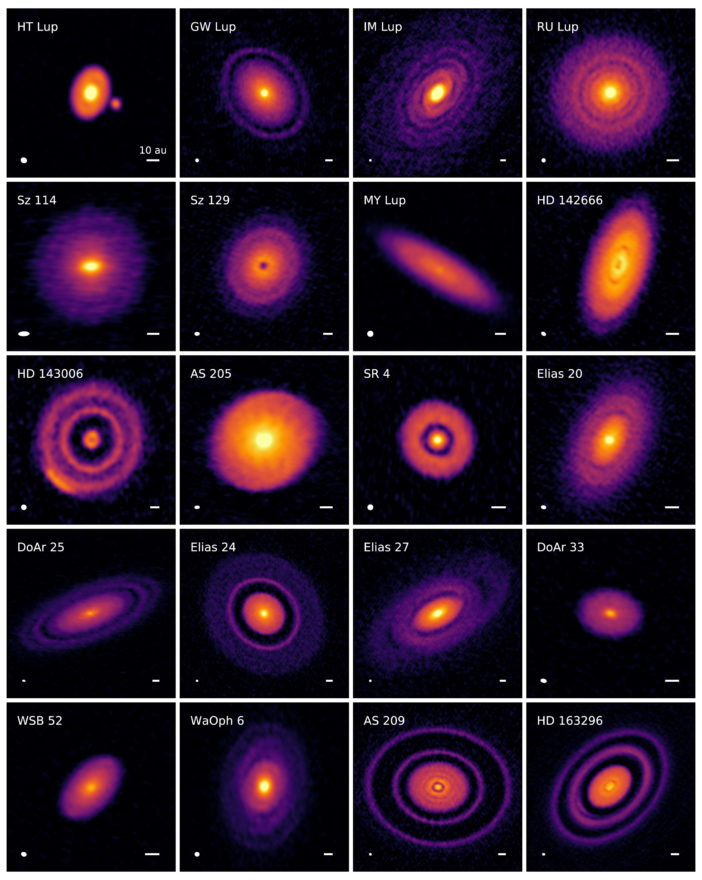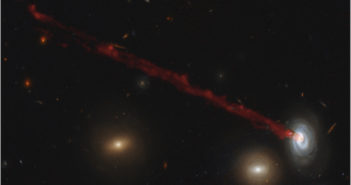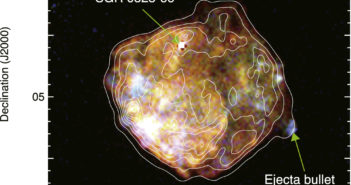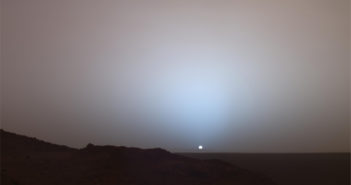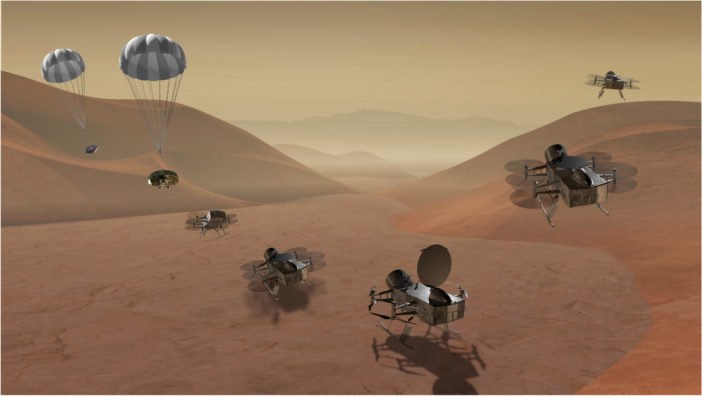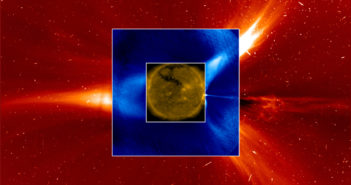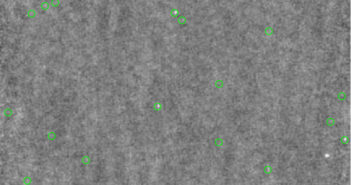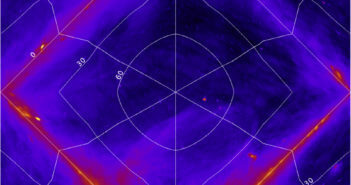
Featured Image: A Choice of Projections
This unique way of looking at the sky (click for the full view) shows an octahedron-based projection of the 408 MHz all-sky map. Map projections are how we represent a spherical surface like the sky on flat surfaces like sheets of paper and computer monitors. Different projections are designed to meet different goals — and because astronomers use many different projections, large data sets should ideally be stored in a way that can easily be converted to the projection of choice. The Tessellated Octahedral Adaptive Spherical Transformation (TOAST) Projection, demonstrated above, is used by projects like the WorldWide Telescope to store data. In a recent study, a team of scientists led by Thomas McGlynn (NASA Goddard SFC) proposes that octahedron-based projections like this one make for an ideal intermediate representation; from this, it’s easy to convert the data to whatever projection is requested by the user. For a closer look at the fascinating math acrobatics behind projections — and for more awesome images of what those projections look like — check out the article below.
Citation
“Octahedron-based Projections as Intermediate Representations for Computer Imaging: TOAST, TEA, and More,” Thomas McGlynn et al 2019 ApJS 240 22. doi:10.3847/1538-4365/aaf79e
